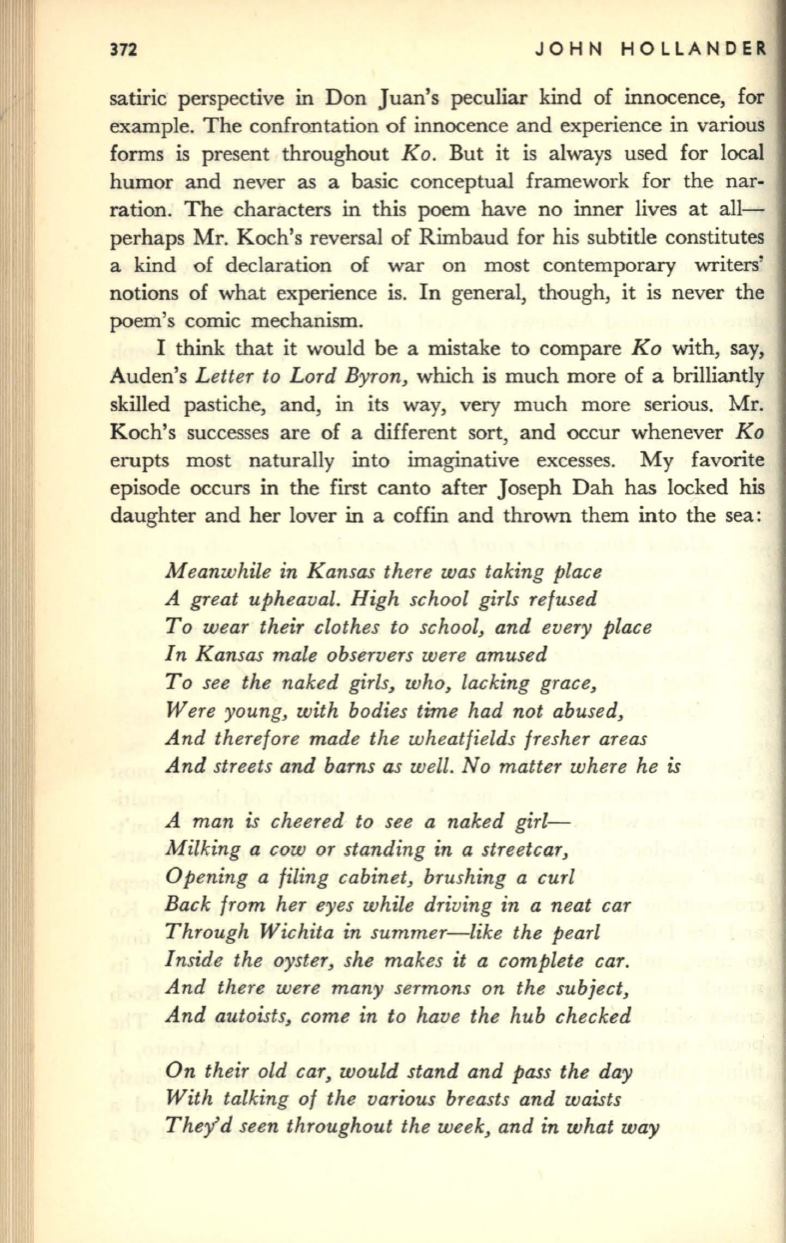
372
JOHN
HOLLANDER
satmc perspective in Don Juan's peculiar kind of innocence, for
example. The confrontation of innocence and experience in various
forms is present throughout
Ko.
But it is always used for local
humor and never as a basic conceptual framework for the nar–
ration. The characters in this poem have no inner lives at all–
perhaps Mr. Koch's reversal of Rimbaud for his subtitle constitutes
a kind of declaration of war on most contemporary writers'
notions of what experience is. In general, though, it is never the
poem's comic mechanism.
I think that it would be a mistake to compare
Ko
with, say,
Auden's
Letter to Lord Byron,
which is much more of a brilliantly
skilled pastiche, and, in its way, very much more serious. Mr.
Koch's successes are of a different sort, and occur whenever
Ko
erupts most naturally into imaginative excesses. My favorite
episode occurs in the first canto after Joseph Dah has locked
his
daughter and her lover
in
a coffin and thrown them into the sea:
Meanwhile in Kansas there was taking place
A great upheaval. High school girls refused
To wear their clothes to school, and every place
In Kansas male observers were amused
To see the naked girls, who, lacking grace,
Were young, with bodies time had not abused,
And therefore made the wheatfields fresher areas
And streets and barns as well. No matter where he is
A man is cheered to see a naked girl–
Milking a cow or standing in a streetcar,
Opening a filing cabinet, brushing a curl
Back from her eyes while driving in a neat car
Through Wichita in summer-like the pearl
Inside the oyster, she makes it a complete car.
And there were many sermons on the subject,
And autoists, come in to have the hub checked
On their old car, would stand and pass the day
With talking of the various breasts and waists
They'd seen throughout the week, and in what way


